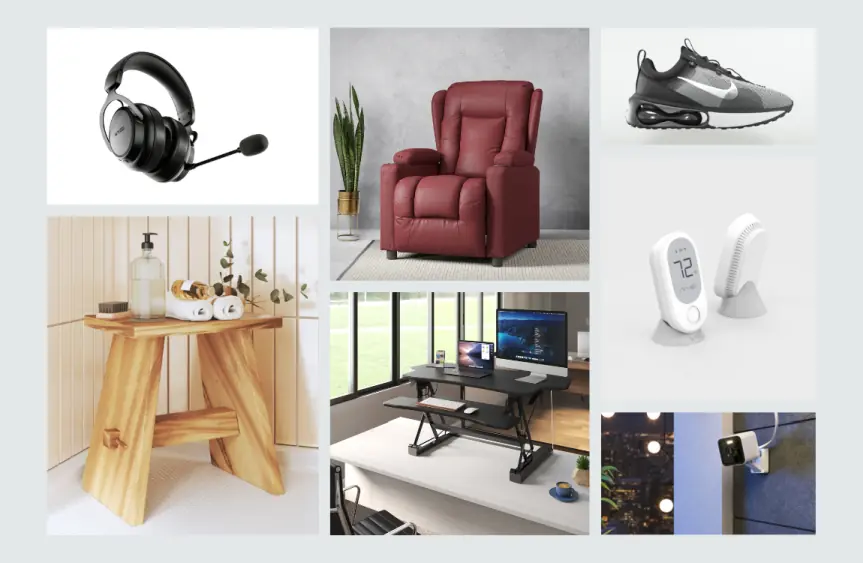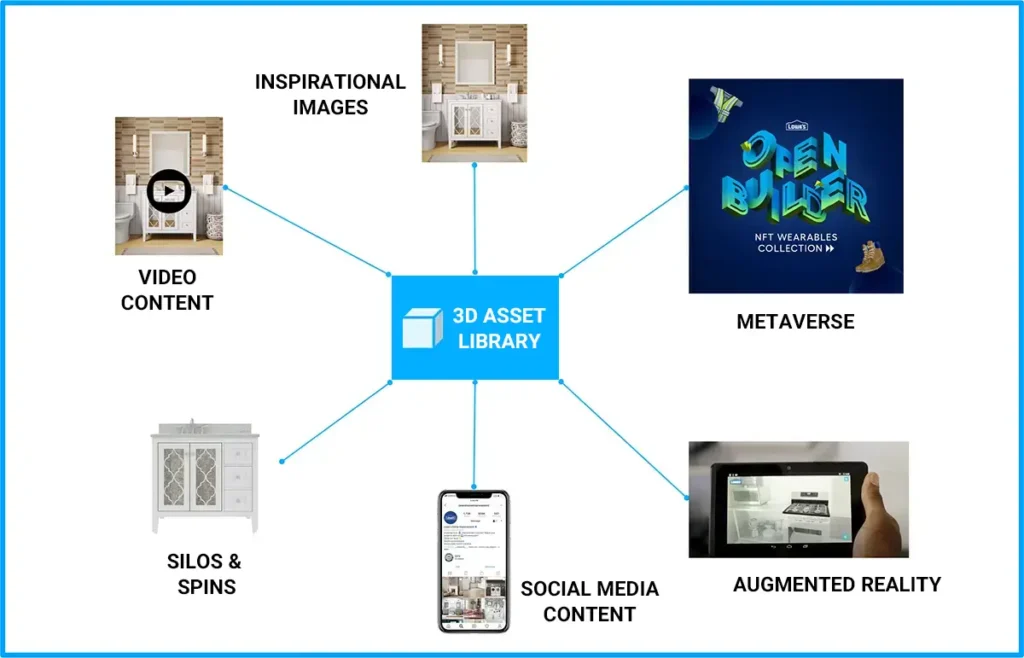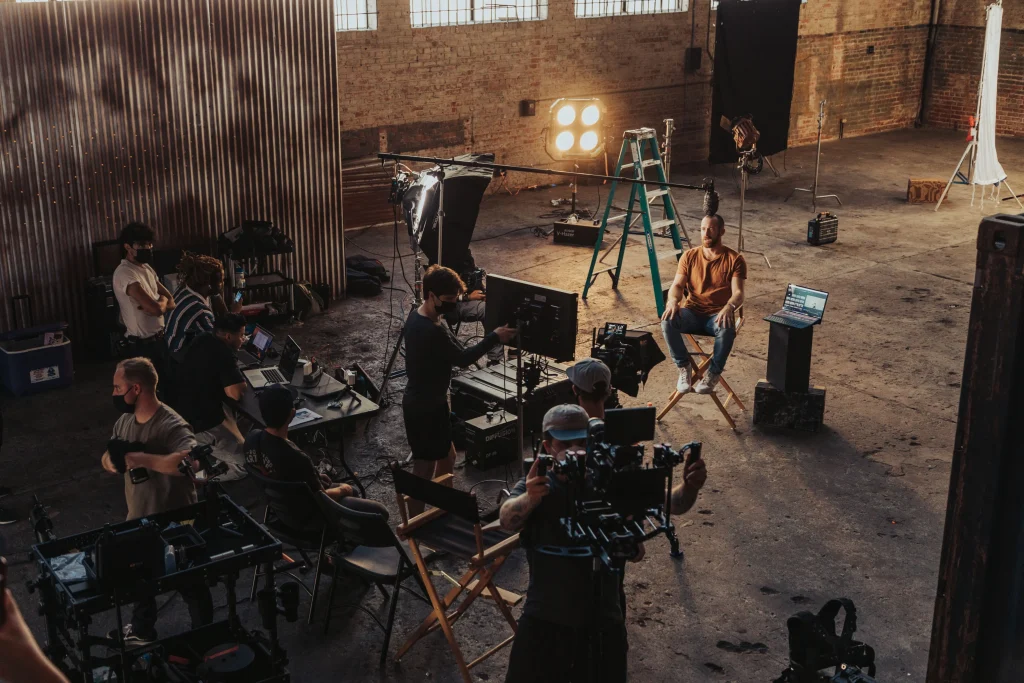In a content-driven world, the importance of 3D visualization cannot be overstated. Businesses are increasingly relying on 3D renderings of their products to enhance visual appeal and create impactful marketing content. The amount of detail that can be captured using 3D technology is impressively high. While enhanced product appeal and aesthetics are a clear advantage, one of the most significant contributions of 3D rendering is its capacity to drastically accelerate product launches.
In a highly competitive landscape, achieving a faster go-to-market is a key determinant of a product’s success, offering crucial first-mover advantages and ensuring no market opportunities are missed. This article aims to provide detailed information on how 3D rendering product visualization helps introduce products to the market more rapidly. The insights you gain will empower you to make informed strategic decisions to directly fuel your business’s growth and performance.
Table Of Contents
- Introduction
- Table of Contents
- Key Insights at a Glance
- Accelerating Each Stage Of The Product Lifecycle With 3D Visualization
- How 3D Rendering Product Visualization Accelerates Product Launch
- Quicker E-commerce Listings
- Streamlined Content Production
- Pre-Launch Marketing Campaigns
- Content Reusability
- Reduced Reliance On Photography
- Speed Up Social Media And Seasonal Campaigns
- Market Testing and Feedback
- Enhanced Collaboration
- Challenges With 3D Rendering Product Visualization
- Overcoming Challenges With The Right Visualization Partner
- Conclusion
- FAQs
Key Insights At A Glance
- 3D product visualization is a pivotal strategy for significantly accelerating product launches, impacting every lifecycle stage from initial design to market entry.
- Generate all essential marketing and e-commerce visuals, from still images to AR/VR experiences, using 3D models before physical production, enabling parallel workflows and early campaigns.
- A single 3D asset offers vast reusability and easy alteration, speeding up the creation of diverse content for all channels and future product iterations.
- While challenges in adopting 3D visualization exist, partnering with an experienced provider like House of Blue Beans ensures efficient, high-quality output and faster time-to-market.
Accelerating Each Stage Of The Product Lifecycle With 3D Visualization
The different stages in a product’s lifecycle can be broadly classified into: product design, product development and product launch. It is no surprise that 3D visualization plays a catalytic role in each of these stages, speeding up the whole process and considerably reducing the time-to-market. For example, in the design phase, 3D renderings make design iterations quicker, increase collaboration in design, streamline the feedback loop and eliminate the need for physical prototypes. Similarly, in the development phase, 3D visualization helps manufacturers better understand product features and plan the production process accordingly, thereby decreasing product lead times.
While these efficiencies in design and development are foundational, the impact of 3D visualization becomes particularly pronounced and strategically vital during the product launch phase. In today’s fiercely competitive e-commerce landscape, the speed of your market entry can be a pivotal determinant of success. 3D product rendering provides a distinct advantage here, enabling the creation of compelling marketing materials, immediate population of e-commerce listings with high-quality visuals, and versatile content reusability across diverse platforms.
How 3D Rendering Product Visualization Accelerates Product Launch
Let us now take a deeper look at how 3D visualizations help launch products faster.
1. Quicker E-commerce Listings

3D product visualization speeds up e-commerce readiness by enabling much quicker online listings. Traditionally, creating high-quality visuals for online stores depended on having final physical products available for photography, often causing significant launch delays. 3D rendering solves this by allowing photorealistic images, silo shots, 360° views, and even lifestyle scenes to be generated, often well before manufacturing concludes.
This crucial decoupling of visual asset creation from the physical production timeline means e-commerce teams can build out product pages and populate extensive catalogs, complete with all product variations (colors, materials, sizes) generated swiftly from a single 3D model, concurrently with the manufacturing process. Consequently, a full suite of consistent, high-quality visuals is market-ready the moment inventory is available. This slashes delays between production and online sales going live, allowing businesses to capitalize on demand instantly.
2. Streamlined Content Production
3D product visualization optimizes the entire content production workflow, offering remarkable efficiency and flexibility that directly accelerates product launches. Once a detailed 3D model is created, it becomes a master digital asset, ready to be repurposed endlessly. This eliminates the need for separate setups for different types of visuals. From crisp silo shots and intricate cutaways to immersive lifestyle scenes, animations, and interactive 360° views, all can be generated from this single source. This reusability drastically cuts down on repetitive work.
Furthermore, easy alterations for product updates, like new colors or minor feature changes, are managed by simply modifying the 3D model and re-rendering, bypassing costly and time-consuming physical reshoots. This digital-first approach also fosters better collaboration among marketing teams and stakeholders through quicker review cycles of visual proofs. The resulting certainty and predictability in visual asset availability allow for much better planning of marketing campaigns, ensuring all content is ready to deploy rapidly and consistently across all channels.
3. Pre-Launch Marketing Campaigns

A significant advantage of 3D rendering product visualization is the ability to launch compelling marketing campaigns well before a physical product exists. Instead of waiting for final prototypes or the first manufacturing run, high-quality, photorealistic 3D visuals can be created directly from design data. This allows businesses to create product hype and build anticipation months in advance – think of a new car model being showcased in stunning visuals long before it hits showrooms. These early assets are incredibly versatile, enabling multi-channel marketing before launch; imagine teaser campaigns on social media, captivating visuals on websites, or even renders for digital billboards.
By starting sooner with polished content, companies can run more effective launch campaigns, priming the market, gathering early interest, generating leads, and even securing pre-orders. This proactive approach ensures that when the product does officially launch, there’s already established awareness and demand, contributing to a faster and more impactful market entry.
4. Content Reusability

A key aspect of 3D product visualization in accelerating launches is the immense content reusability it offers. Once a digital 3D model of a product is created, it becomes a highly versatile master asset. This single model can be used to generate a vast array of marketing materials – from photorealistic static images taken from any conceivable angle to dynamic animations, interactive 360° spins, and immersive AR/VR experiences. For instance, an architecture firm can showcase a building with various material finishes or color schemes without recreating the base model.
This adaptability allows visual content to be tailored for different channels like print catalogs, social media campaigns, and e-commerce listings swiftly. Such reusability inherently shortens content creation timelines, as teams aren’t starting from scratch for each new visual. Moreover, these models can be easily tweaked for marketing similar products or updated versions in the future, offering long-term efficiency and speed.
5. Reduced Reliance On Photography

3D rendering product visualization significantly reduces reliance on traditional photography, a process often fraught with logistical challenges that can delay launches. Conventional product photography is inherently time-consuming, demanding physical product availability, shipping to studios, elaborate set designs, and photographer scheduling. Capturing different use cases and product variations multiplies this effort. Moreover, static photographs cannot be easily or effectively converted into other dynamic forms of content like product animations or AR/VR experiences, necessitating separate, lengthy creation processes.
3D visualization bypasses these hurdles by generating all necessary marketing visuals, for instance, for a new line of home appliances, directly from digital models. This means countless angles, variations, and scenes can be created swiftly without a physical product, saving valuable time and directly quickening the overall product launch cycle by ensuring visuals are ready much sooner.
6. Speed Up Social Media And Seasonal Campaigns

3D product visualization significantly accelerates the deployment and agility of social media campaigns, crucial for timely product launches. High-quality, engaging visuals can be created quickly from 3D models, enabling marketing teams to hit the ground running on different social media channels simultaneously. This speed is invaluable, especially if a product launch aligns with seasonal campaigns, e.g. like Christmas or summer campaigns, as 3D assets offer the versatility to be easily adapted with thematic elements.
A large number of visuals, tailored to various formats—such as Instagram posts and stories, Facebook carousels, or even short animations for YouTube and TikTok—can be rapidly generated from a single master model. This ability to swiftly produce diverse, platform-specific content ensures a consistent and high-impact presence, drastically reducing the time needed to populate and launch comprehensive social media campaigns, ultimately supporting a faster overall product introduction.
7. Market Testing and Feedback
3D rendering product visualization significantly speeds up launches by enabling faster and more cost-effective market research before committing to full-scale production. Instead of relying on expensive and time-consuming physical prototypes, companies can create realistic 3D visuals of product concepts – for example, various new smartwatch or sunglasses designs – to present to potential customers. These visuals can be easily distributed through online surveys or focus groups to gauge user opinion, preferences on features, and overall appeal.
The feedback obtained from this early-stage testing is invaluable. It allows businesses to quickly identify winning designs or make necessary feature changes and design modifications directly to the 3D model. This iterative process, based on virtual interaction rather than slower feedback on physical models, ensures the product is better aligned with market desires from the outset, fastening the overall product launch by reducing late-stage changes and increasing the likelihood of market acceptance.
8. Enhanced Collaboration
3D product visualization fosters a more collaborative environment for creating marketing and e-commerce visuals, which is crucial for accelerating product launches. Unlike traditional methods, where a final image is often difficult and costly to alter, 3D models serve as flexible digital assets. This adaptability means stakeholders from different teams—marketing, sales, product development, and even external partners—can easily review renders and provide precise, actionable feedback.
For example, if a lifestyle image needs a different setting or an angle needs adjustment based on collective input, these corrections can be efficiently made by tweaking the 3D scene or model, avoiding the need for complete reshoots. This iterative process, where visual adjustments are quick and shareable, ensures all teams are aligned, leading to faster approvals of final assets and a more cohesive, rapidly deployed product presentation.
Challenges With 3D Rendering Product Visualization
3D visualization has several advantages. But companies face challenges implementing 3D rendering technology for their product visualization needs. The following are some of the common challenges faced in adopting 3D product visualization:
- Not enough in-house resources capable of producing 3D visuals at scale
- Difficulty in managing a large number of 3D digital assets
- Getting high volumes of renders delivered on time
- Ensuring consistent quality across all 3D visual assets created
- Maintaining visual brand consistency across all selling platforms
- Communication issues when working with 3D rendering service providers
- Challenges in collaborating with internal and external stakeholders during different stages of visual content production
Overcoming Challenges With The Right Visualization Partner
The above challenges can be overcome by partnering with the right 3D visualization service provider. We at House of Blue Beans (HOBB) understand these difficulties faced by companies. With over a decade of experience in the field of 3D visualization, we have carefully crafted solutions that make 3D product rendering smooth and hassle-free for businesses to adopt. We specialize in providing scalable 3D content creation solutions, consistent quality, brand standardization and streamlined go-to-market pipeline. Our proprietary Visualization Management System(VMS) makes digital asset management smooth and stress-free. These qualities make us a trusted and reliable partner for all 3D rendering product visualization needs.
If you are looking for a list of the top 3D service providers, do read our blog, Top 3D Visualization Companies In The World.
Conclusion
3D rendering product visualization stands out as a transformative strategy for significantly accelerating product launches. As we’ve explored, its power lies in enabling quicker e-commerce listings and fostering streamlined content production through efficient asset reusability and ease of alteration. Furthermore, by facilitating early marketing campaigns, enabling rapid market testing and feedback loops, and enhancing collaboration among diverse teams, 3D visualization removes traditional bottlenecks. Thus, embracing 3D visualization allows companies to seize market opportunities more effectively and gain a competitive advantage. To fully utilize this advantage, partnering with a premium 3D service provider like House of Blue Beans becomes crucial.
You may dive into this case study on how we helped a Fortune 50 company achieve a faster time-to-market and accelerate product launches.
